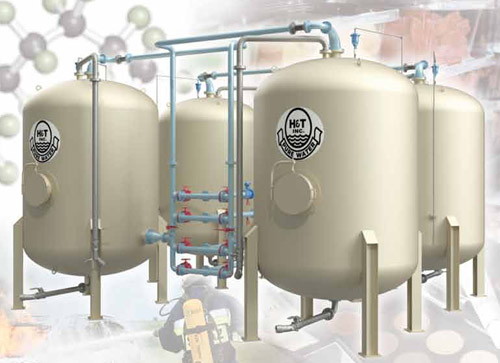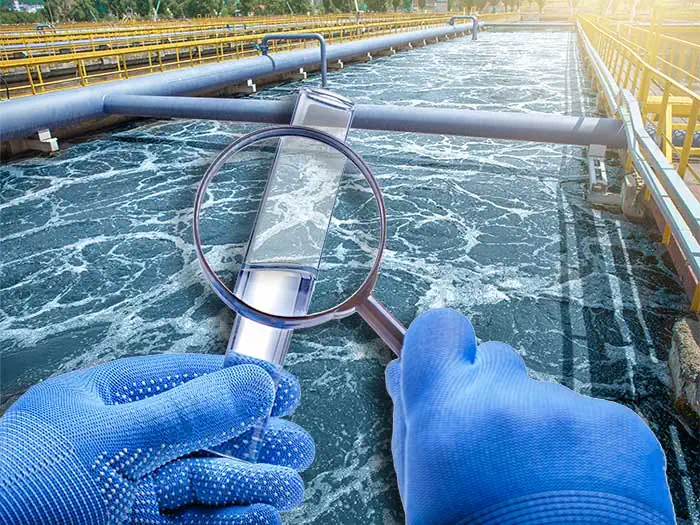The Complete Guide to PFAS Treatment for Water Contamination
The Complete Guide to PFAS Treatment for Water Contamination
Blog Article
Your Overview to PFAS Therapy Technologies and Perks
The frequency of PFAS contamination in water resources necessitates a detailed understanding of available therapy technologies. Numerous techniques, such as turned on carbon filtering, ion exchange systems, and advanced oxidation procedures, existing distinctive benefits in attending to these relentless contaminants. Each innovation not just targets specific PFAS compounds but likewise plays a crucial role in enhancing general water high quality and safeguarding ecological honesty. As neighborhoods come to grips with the ramifications of PFAS exposure, the option of an ideal therapy technique ends up being increasingly vital, motivating a better assessment of these technologies and their respective benefits.
Recognizing PFAS Contamination
Recognizing PFAS contamination is vital for resolving its pervasive influence on environmental and human wellness (m270 pfas treatment). Per- and polyfluoroalkyl substances (PFAS) are a group of artificial chemicals extensively used in various industrial and consumer products because of their water- and grease-resistant properties. Typically found in firefighting foams, non-stick pots and pans, and water-repellent materials, PFAS have actually entered the setting through manufacturing procedures, wastewater discharges, and leaching from land fills
When released, these compounds continue the environment, leading to prevalent contamination of dirt and water sources. Their special chemical framework, defined by solid carbon-fluorine bonds, renders them immune to destruction, resulting in a sensation referred to as "for life chemicals." PFAS can accumulate in the human body and the food chain, potentially creating unfavorable health impacts, including immune system disruption, developing concerns, and a boosted risk of certain cancers cells.
Governing firms and wellness organizations are significantly identifying the importance of PFAS contamination, motivating efforts to check, assess, and alleviate its results. Comprehending the pathways of PFAS contamination is necessary for informing public law and creating efficient strategies to safeguard both environmental and human health.
Introduction of Treatment Technologies
Various therapy modern technologies have actually been established to address the obstacles postured by PFAS contamination in water and soil. These innovations can be extensively categorized right into several groups, each with its one-of-a-kind devices and performance in removing PFAS compounds.
One popular method is ion exchange, which makes use of material products to capture and eliminate PFAS from contaminated water. This approach is especially effective for short-chain PFAS and can achieve substantial reductions in focus degrees. An additional technology, advanced oxidation procedures (AOPs), employs solid oxidants and ultraviolet light to damage down PFAS into much less damaging substances. AOPs are suitable for treating a wide variety of PFAS substances yet may need mindful optimization to optimize effectiveness.

Activated Carbon Filtration
Turned on carbon filtration is a commonly used approach for the removal of PFAS from infected water, understood for its capacity to adsorb a wide variety of natural compounds. This technology utilizes turned on carbon, an extremely porous product with a considerable surface, which assists in the binding of PFAS molecules via physical adsorption. The effectiveness of activated carbon in removing PFAS is influenced by several aspects, consisting of the kind of carbon utilized, the contact time, and the concentration of PFAS in the water.
One of the advantages of triggered carbon filtering is its adaptability; it can be executed in numerous configurations, such as granular activated carbon (GAC) systems or powdered turned on carbon (PAC) systems. GAC systems are normally utilized in larger-scale applications, while PAC can be used in smaller sized or momentary arrangements. The modern technology is relatively easy to run and preserve, making it accessible for lots of water treatment centers.

Ion Exchange Solution
Ion exchange systems stand for an additional reliable method for the elimination of PFAS from contaminated water, complementing approaches like triggered carbon filtration. These systems operate on the principle of exchanging ions in the water with ions hung on a resin material. Ion exchange resins can be especially created to target the adversely billed PFAS substances, successfully recording them and allowing cleaner water to travel through.
Among the primary advantages of ion exchange systems is their ability to eliminate a large array of PFAS, including both long-chain and short-chain variations. This convenience makes them ideal for numerous applications, ranging from metropolitan water therapy to industrial processes. Furthermore, ion exchange systems can commonly achieve lower detection limits for PFAS contrasted to some other treatment approaches, thus our website improving water top quality.
However, it is necessary to keep an eye on and take care of the regrowth of ion exchange media, as the performance can decline gradually as a result of saturation. Correct maintenance and substitute of the resin are important for maintaining the system's performance. Generally, ion exchange systems give a reliable and effective service for PFAS removal, contributing significantly to risk-free alcohol consumption water standards and ecological protection.
Advanced Oxidation Processes
Advanced Oxidation Processes (AOPs) utilize powerful oxidants to properly weaken PFAS compounds in contaminated water. These ingenious therapy techniques generate highly responsive species, such as hydroxyl radicals, that can damage down intricate PFAS particles into much less damaging byproducts. m270 pfas treatment. AOPs generally employ combinations of ultraviolet (UV) light, ozone, hydrogen peroxide, or Fenton's reagent, improving the oxidation potential and improving destruction effectiveness
The main benefit of AOPs lies in their capability to target a broad series of PFAS compounds, consisting of both long-chain and short-chain versions. This convenience is vital, as PFAS contamination usually involves mixes of different substances with differing chemical structures. In addition, AOPs can be incorporated into existing water therapy systems, making them a practical solution for several towns and sectors.
However, the implementation of AOPs can be resource-intensive, calling for mindful consideration of operational prices and energy intake. Additionally, while AOPs work in damaging down PFAS, they might not completely get rid of all results, demanding further treatment actions - m270 pfas treatment. In general, AOPs represent a promising method for resolving PFAS contamination, adding to cleaner water resources and boosted public wellness defense

Final Thought
By choosing the suitable technology, communities can enhance water high quality, safeguard public wellness, and minimize the ecological risks linked with PFAS direct exposure. Proceeded study and execution of these methods are important for efficient management of PFAS contamination in impacted locations.
Report this page